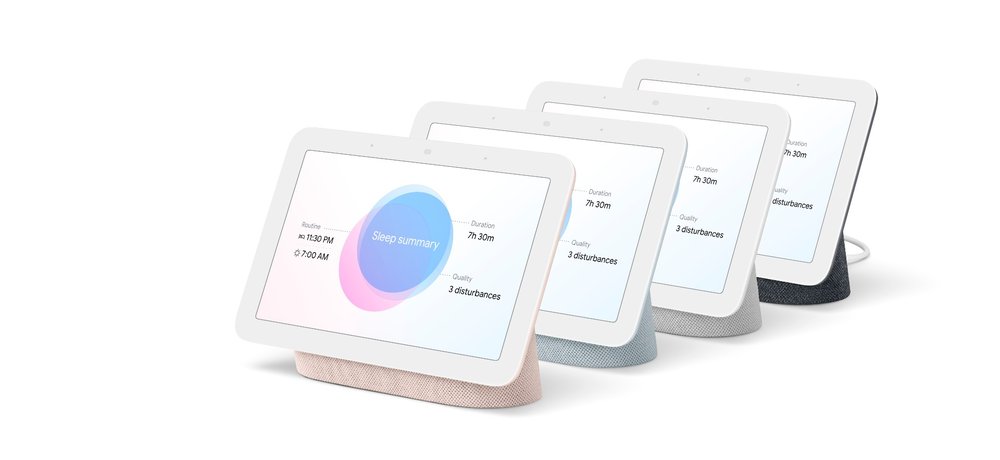
On March 16 (local time), Google announced the second generation of the smart display Nest Hub. The new Nest Hub is equipped with a sleep tracking feature called Sleep Sensing, which does not use a contact device and camera to track your appearance while you are sleeping, but instead uses a Soli motion sensor.
The Smart Display Home Hub, announced by Google in 2018, was renamed Nest Hub in 2019. The second-generation Nest Hub, announced on March 16, 2021, has a 7-inch screen surrounded by a thick bezel, and audio bass is improved by 50% over the first generation.
The new feature installed in the 2nd generation Nest Hub is Sleep Sensing, a sleep tracking function using Soli, Google’s own motion sensor. Since so many people are asking for information about sleep and health and accessing Google, they have also integrated sleep-related solutions into the second-generation Nest Hub.
In addition to increasing the risk of dementia by 33% and cardiovascular disease by 48%, sleep deprivation increases the brain age by 3 to 5 years. In addition, traffic accidents due to lack of sleep are also a problem, and many people suffer because they cannot get enough sleep. The second-generation Nest Hub, including sleep sensing, is a clue to solving this sleep problem.
Sleep has a huge impact on your life, but it’s difficult to keep track of your sleep. In recent years, sleep trackers and fitness trackers that are mounted on wrists and the like have also been popularized. But for those who are concerned about mounting the device while sleeping, or who want to charge the device while sleeping, the mountable device is far from an option.
Sleep sensing, a sleep tracking function supported by the newly released second-generation Nest Hub, can be integrated and placed at the bedside to track sleep without contact. The Nest Hub does not have a camera that takes pictures of sleep, but it is possible to track sleep and breathing positions using a small radar sensor Soli. Soli is said to be able to detect not only movement of the limbs, but also movements within 1cm of breathing.
In addition, the Nest Hub is a structure that collects information with a built-in microphone, light, and temperature sensor, and collects data on factors that affect sleep, such as coughing and nose, and actions during sleep, environmental sounds, lighting brightness, and temperature.
It is said that sleep sensing only detects the person closest to the Nest Hub, and movements of other people nearby don’t affect sleep tracking. Sleep sensing is an opt-in feature, and sleep tracking is not set unless the user permits it. In addition, graphs representing sleep movements, and voice information related to sleep such as cough and nose are processed inside Nest Hub.
Reportedly, some information, such as cough count and snoring time, is sent to Google, but voice and movement graphs are not. Users can delete the Nest Hub information and only disable the microphone among the sleep tracking functions. When a user wakes up, he/she can check various types of sleep-related information. Data can be synced with the health care app Google Fit and viewed on iOS and Android devices.
Users can help improve their lives by grasping their sleeping conditions, and Nest Hub also has a function that recommends the ideal schedule by identifying the user’s sleeping patterns.
To develop sleep sensing, Google reportedly trained over a million hours of radar measurement data collected from thousands of people with a machine learning model along with sleep diary or sleep data collected from sensors. Google says that sleep sensing in the second-generation Nest Hub will be available as a free preview until next year. Therefore, there is a possibility that it will be provided as a paid service in the future. Google is also looking to integrate it with Fitbit sleep tracking, a fitness tracker company acquired in January 2021.
The second generation Nest Hub will start pre-ordering in the United States, Canada, United Kingdom, Germany, France and Australia from March 16, and launch is scheduled for March 30. The price is $99.99. Related information can be found here.


















Add comment